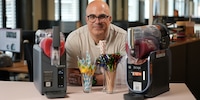

Four ice cream makers – which one’s the best?
While kneading, chopping and juicing can all be done by hand, making ice cream is virtually impossible without the right equipment. I tested four ice cream makers by three different manufacturers.
All that glitters is not gold – and all that freezes is not ice cream. Remember those homemade ice lollies from your childhood? The ones you made by freezing diluted syrup or yoghurt? They were rock hard. We used to lick on those ice blocks like goats on a salt stone and secretly long for an industrially produced ice lolly.
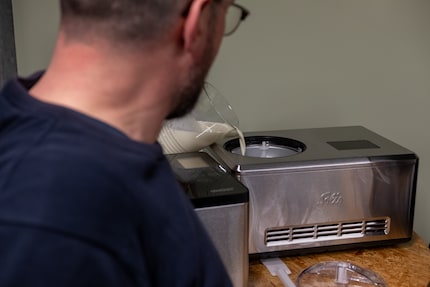
Source: Branko Nastic
Why did our homemade ice lollies turn rock hard? The problem’s purely physical. If a liquid freezes, it crystallises. The larger these crystals are, the more unpleasant the ice cream feels on your tongue. Ice cream’s so creamy because the ice crystals are so tiny you don’t notice them. To create the smallest possible ice crystals, the ice mass needs to be moved over and over again during the freezing process. And that’s exactly what three of the ice cream makers I tested do. The fourth one crushes the ice cream mixture with a rotating blade, turning it into a smooth mass with small crystals. At least that’s the theory.
The four ice cream makers
Solis Gelateria Pro Touch
This classic ice cream maker actively cools and stirs the ice cream mixture. There aren’t many settings.

Unold Gusto
At first glance, this machine looks suspiciously similar to the Gelateria Pro Touch. In fact, the container and mixing unit are identical.
Solis Gelatissima
Solis’s newest ice cream maker has less capacity, but also takes up less space.
Ninja Creami
Unlike the three others, this ice cream maker freezes the ice cream mixture first and then loosens it by drilling a blade through it.
The three tests
I’m by no means a pro ice cream maker, so I relied on simple recipes I found either in the manuals for the machines or online. An amateur move? Well, in my defence, I had neither the time nor the equipment in our modest office kitchen to go down the ice cream science rabbit hole. Plus, that’s the way I usually do it – I order an appliance and the first thing I do is try the simple recipes that come with it.
Dairy-based ice cream
Simple vanilla-flavoured ice cream made from milk, cream, sugar and fresh vanilla. I expect any ice cream maker to nail this recipe.
Pineapple sorbet
A one-ingredient recipe – pureed canned pineapple. Sorbet is very difficult to make, especially if you follow such a simple recipe. The results were accordingly.
Frozen yoghurt
It doesn’t get simpler than this recipe. Shop-bought fruit yoghurt’s all you need.
The results
First place: Solis Gelateria Pro Touch
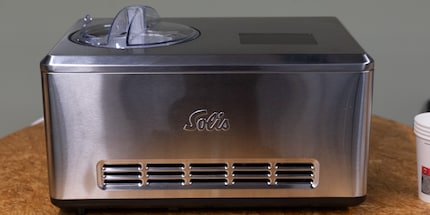
Source: Simon Balissat
The Gelateria Pro Touch was particularly impressive when it came to dairy-based ice cream and frozen yoghurt. Both turned out creamy and were ready in around 40 minutes. The sorbet was a bit too coarse with too many ice crystals. This ice cream maker’s simple to operate. There’s a mode for making ice cream, a cooling mode and a stirring mode, as well as a timer that can be set to a maximum of 60 minutes. It’s also easy to clean, as you can easily remove and wash the container and the mixing tool. Compared to the almost identical appliance by Unold, the Solis cools down a little less, which is why less frozen mixture gets stuck to the edge of the container. All in all, the Solis is my favourite of the three classic ice cream makers.
Second place: Unold Gusto
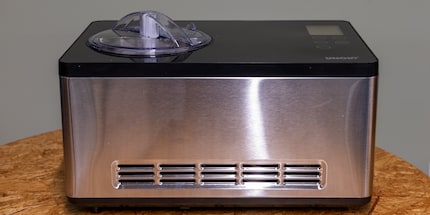
Source: Simon Balissat
It’s almost identical to the Solis, but delivered slightly less consistent results and came second in all three tests. From all types of ice cream, the sorbet was again my least favourite. However, this is probably also due to the fact that I didn’t add any sugar. All in all, it’s second place for Unold, but only just.
Third place: Solis Gelatissima
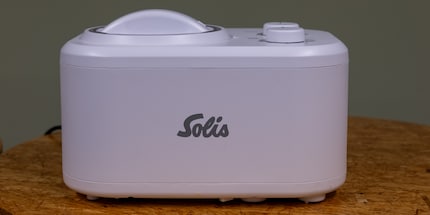
Source: Simon Balissat
The small Gelatissima cools down faster than the competition, which is its disadvantage, as the mixture’s often already frozen hard at the edge of the container while it’s still liquid in the mixer. This led to irregular results. Only the sorbet was better and more homogeneous after about 20 minutes compared to what the other makers produced. However, that quickly changed again as I let it run after 20 minutes. The sorbet froze and ended up too hard. In addition, the motor for stirring is located in the lid of the machine. It’s powered by two contacts that must fit together exactly, which frustratingly didn’t work several times in my test. Therefore, the Gelatissima ends up in last place without a doubt.
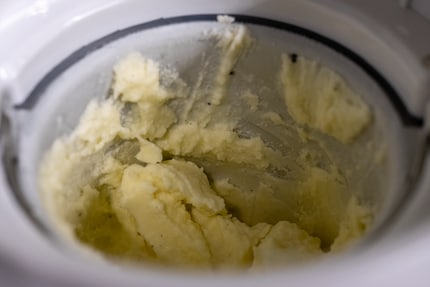
Source: Simon Balissat
Special case Ninja Creami
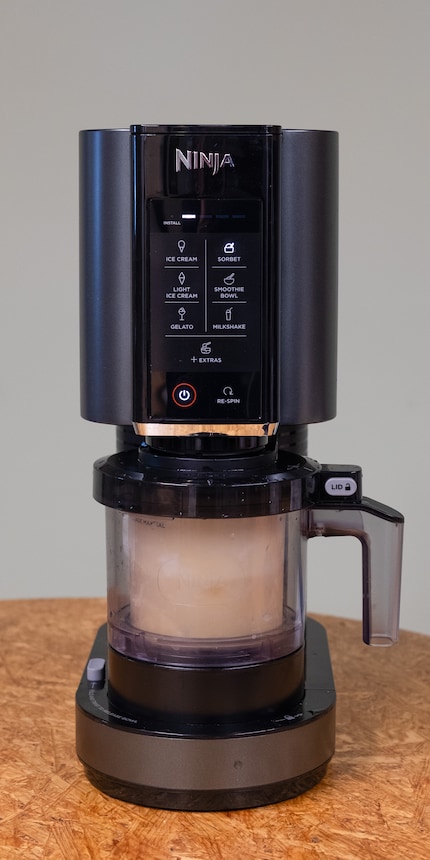
Source: Simon Balissat
Before starting my test, I wasn’t sure whether to include the Creami. Now I know better. The Creami ice cream maker is a special case and can’t be compared to the other ice cream makers. Why? You first have to freeze the ice cream mixture for 24 hours in one of the included containers. Then you clip the container into the appliance, which resembles a filter coffee machine. A rotating blade then turns the frozen mass into light and fluffy ice cream – in theory. In practice, the dairy-based ice cream turned into vanilla butter. The Creami doesn’t work for conventional ice cream recipes. However, there’s a huge database of recipes just for this machine. Having said that, the Creami produced great frozen yoghurt and sorbet. The sorbet in particular was as creamy as a dairy-based ice cream.
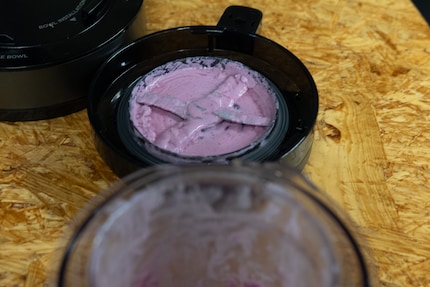
Source: Simon Balissat
So what did my test teach me? First of all, making ice cream is difficult, even with a machine. It’s all about getting the ratios of ingredients just right. Add too little or too much fat or sugar and even the best ice cream maker will fail. I’d keep the Ninja Creami because it promises to make other nice foods such as smoothies, which I haven’t yet tested.

Source: Simon Balissat
When I flew the family nest over 15 years ago, I suddenly had to cook for myself. But it wasn’t long until this necessity became a virtue. Today, rattling those pots and pans is a fundamental part of my life. I’m a true foodie and devour everything from junk food to star-awarded cuisine. Literally. I eat way too fast.
Practical solutions for everyday problems with technology, household hacks and much more.
Show all


